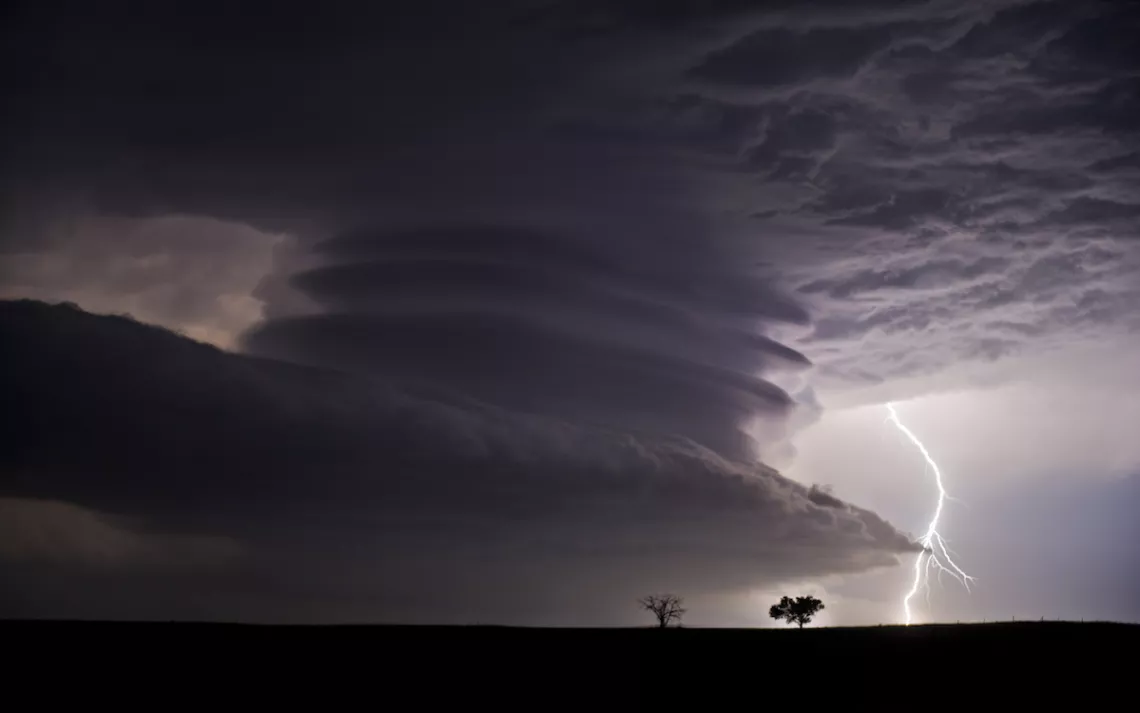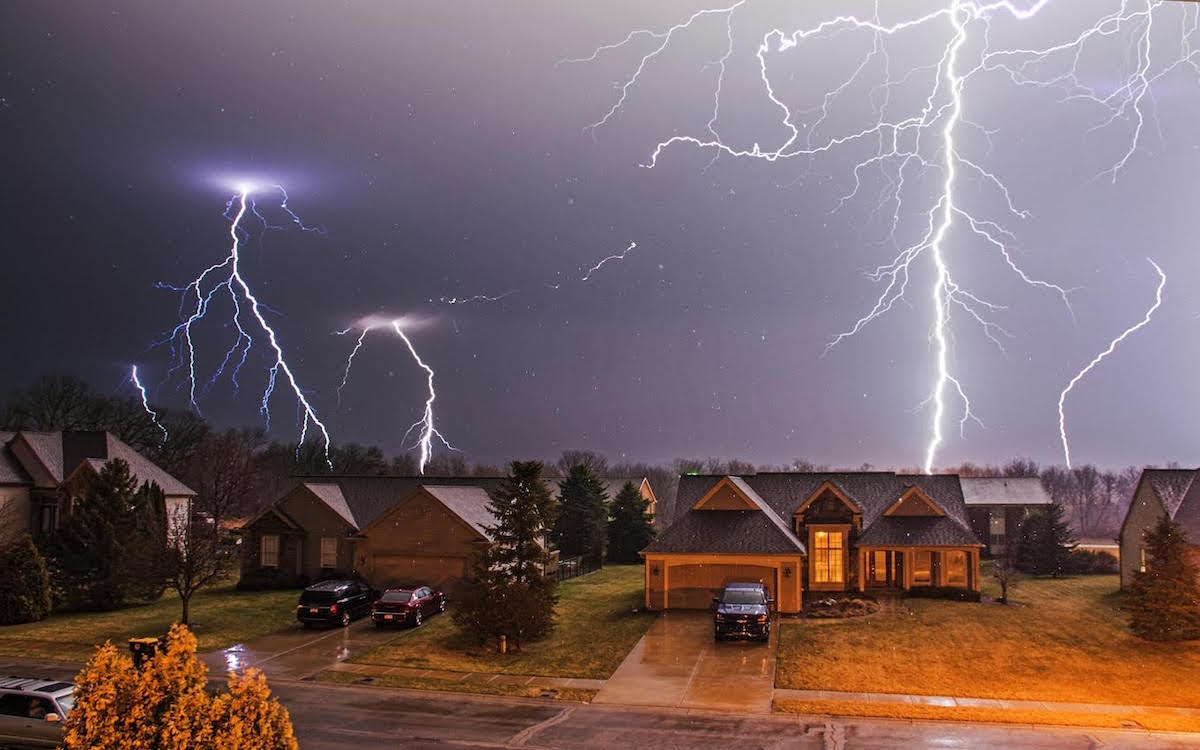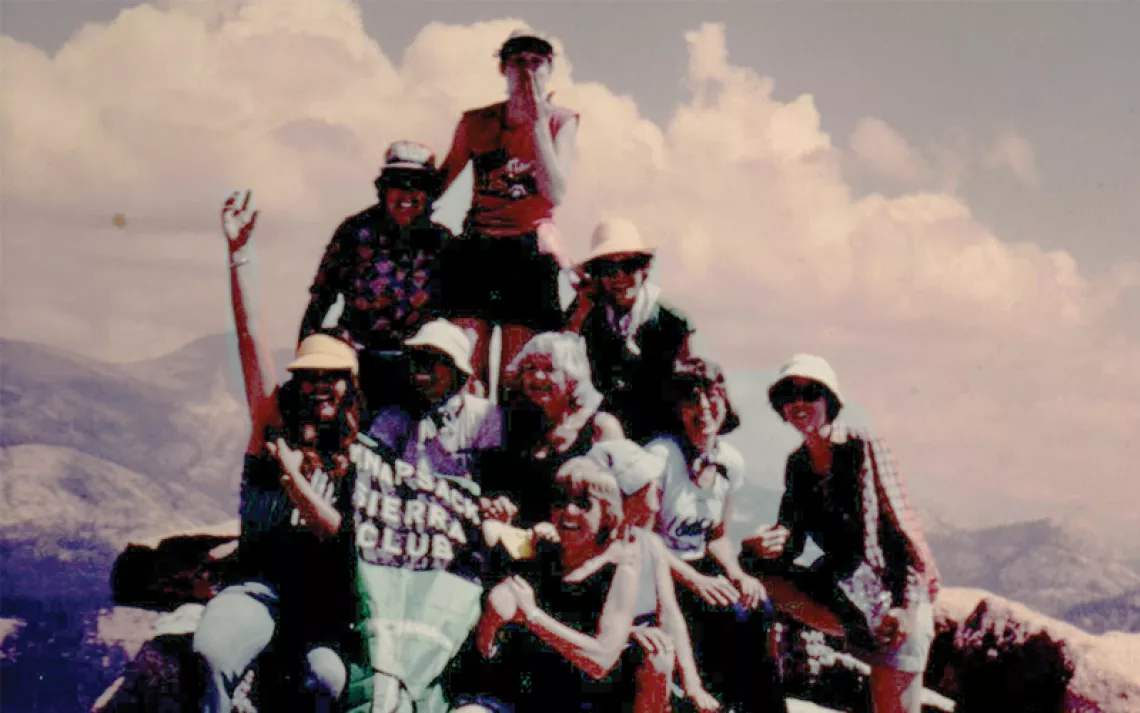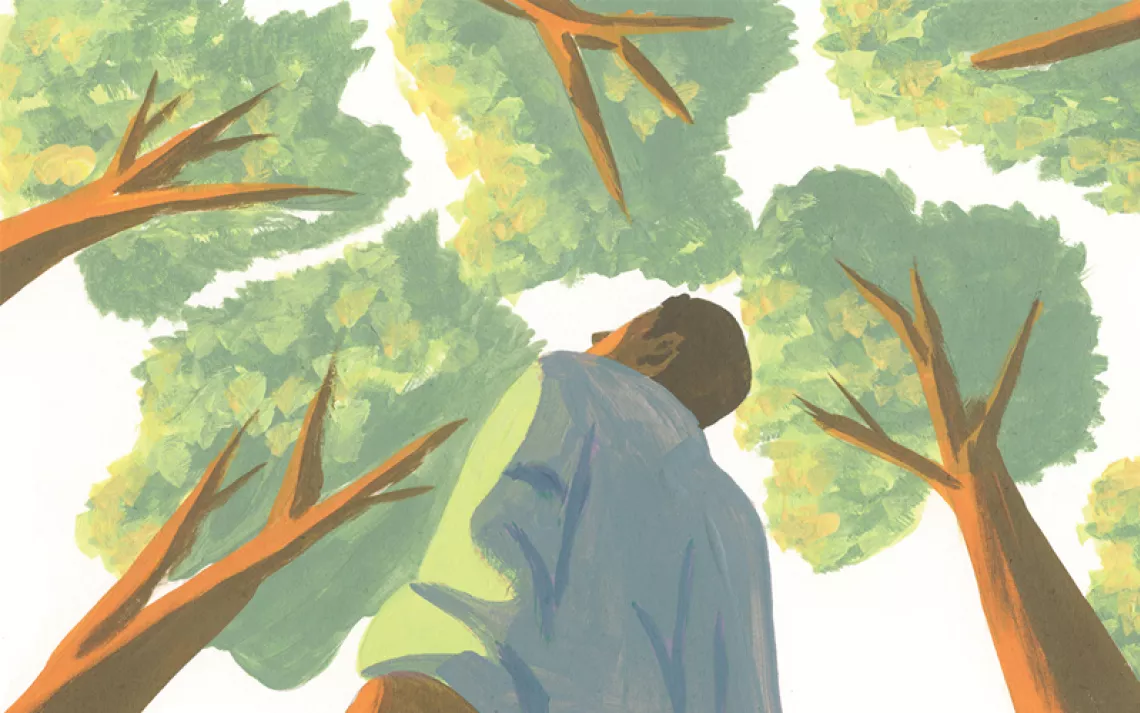Why Do People Become Storm Chasers?
Hint: It isn’t just about the adrenaline

A supercell storm at night on the Colorado-Nebraska border on June 22, 2012 | Photo by Jennifer Brindley Ubl
In April 1996, an EF-3 tornado hit Ogden, Illinois, flattening much of the town. Sixteen-year-old Richard Lewis and his father arrived shortly after the storm to help his grandparents and other family members clean up. Lewis remembers seeing his dad, a minister, cry for the first time when he saw what was left of his childhood church. The roof and two walls had been blown away—only the back and right side wall of the brick building remained.
That day left a permanent mark on Lewis. Now a welder living in Paxton, Illinois, the 37-year-old is obsessed with the weather.
He relays real-time updates to his local National Weather Service office as part of its Significant Weather Observation Program. He also contributes to StormViewLive, an organization that provides live video storms to news outlets.
Minimizing the harm caused by storms is a top priority for Lewis because of what he witnessed all those years ago.
“At the time, they didn’t have a lot of warning, and the sirens didn’t even go off,” he says. “I knew I wanted to get into this and help the National Weather Service get more timely warnings out.”
Lewis is a storm chaser—someone who keeps track of when and where thunderstorms are happening and travels to the site to see and take pictures of clouds, lightning, rainbows, and hopefully, a tornado or two.
“I didn’t go to school for meteorology,” Lewis says. “I taught myself to read what the weather models show so I could pick a target.”
Storm chasers keep tabs on severe weather outlooks on the internet through sites such as the NOAA’s Storm Prediction Center and compare notes with their peers on forums and social media. Lewis met Josiah Maas, a 28-year-old earth science teacher from West Lafayette, Indiana, through a Facebook group for storm chasers.
“You’re going out trying to find storms and get close enough to them to see and understand them better,” Maas says. “In my case I’m more interested in the artistic element of the storms and getting good pictures. Some other people do the exact same thing for scientific knowledge to try to learn about what causes storms, how to predict them better, and how to protect people from them.”
Maas has been chasing storms for five years. When he was around four years old, his parents would stay up late with him on stormy nights to observe the sights and sounds. They taught him to count the seconds between a lightning strike and the thunder to determine the distance of the storm. But even they didn’t know how far these science lessons would take Maas.
Two events drove Maas down the storm-chasing rabbit hole near the end of his college career.
“In 2011, there were huge outbreaks, almost like a parade of storms.” Maas says. “It was a record-breaking year for the number of tornadoes across the United States.”
Following the activity on the news and on social media, he started to wonder if he could get closer to the action. “I was studying to get a degree in earth science education, so I was obviously already interested in severe weather,” Maas says. “It sparked that interest a little bit hotter, seeing so much severe weather happening right then.”
That same year, Maas and his girlfriend of about a year ended their relationship. He says he felt an emptiness that he needed to fill, and his new passion for storm chasing helped lift his mood.
“Even just looking at videos of tornadoes or seeing a storm in person, it took my mind off myself and my problems and my loneliness,” Maas says. “I wouldn’t say it was a replacement for the girl, because you can’t compare a hobby with a person, but it was something that I turned to to feel better.”

Lightning event in early March 2017 that lasted for about 40 minutes. The cold temperature at about 33 degrees, combined with elevated instability in the density of the air, made for a very electrically charged storm. | Photo by Adam Kraft
Witnessing the power of nature can have an addictive quality. Jennifer Brindley Ubl describes it as catching a bug, but she doesn’t want people to think of storm chasers as just adrenaline junkies. A professional photographer living in Milwaukee, Wisconsin, Ubl travels about 20,000 miles each storm season (usually beginning in late April and continuing through October) with her chasing partner, Skip Talbot.
“By and large, storm chasers are out there because they want to witness the majestic awe and power of Mother Nature,” Ubl says. “There can be a perception out there that storm chasers are wanting the destruction, but that’s not true at all.”
Ubl and Talbot joined two other chasers, Darin Brunin and Joshua Jans, to start a nonprofit called Storm Assist, which raises funds for victims of storm damage. The organization uses videos and photos donated by their fellow storm chasers to create and sell calendars, DVDs, T-shirts, and more. Storm Assist recently donated $5,000 to the victims of Hurricane Harvey in Texas.
“[The nonprofit] was the best way we could think of to give back to the communities that we witnessed being ravaged by tornadoes,” Ubl says. “Often storm chasers are the first people on the scene, even before emergency management, because they’re chasing the tornado itself.”
Lewis confirms that chasers often end up participating in search and rescue, because he’s done so himself. “I literally knew nothing about first aid or what to do if I came across some serious injuries,” he says. “But you gotta do what you gotta do to help.”
Wanting to be able to do more for the people he was coming across in towns hit by tornados, he got certified as an emergency medical responder and plans to pursue a career as an emergency medical technician.
Some storm chasers turn their passion for severe weather into a business venture.
Adam Kraft, a professional photographer in Spring Arbor, Michigan, recently launched a weather-forecasting business, jrwxman.com, with his friend Brandon Radu of Fort Wayne, Indiana.
They were both growing audiences who looked to them for weather forecasting and outlooks when they decided to combine their efforts to serve Indiana, Ohio, and lower Michigan. Visitors to their website aren’t just storm chasers. Kraft says the general public uses it to get a clearer picture of the weather. The business partners have received returns on their project through advertisers since they launched in April.
“Our goal has been to bring our followers accurate and dependable forecasts and outlooks that steer away from so much of the hype out there when significant weather is on the horizon,” Kraft says. “We have had a lot of positive feedback.”
For most storm chasers, it’s ultimately about the lessons they learn. Maas likes to share one with the students he teaches at Jefferson High School in Lafayette.
“Everybody should look at the sky more and appreciate how awesome weather can be,” he says. “If storm chasing is a way that I can make people more aware of that, then I feel like it’s worthwhile.”
 The Magazine of The Sierra Club
The Magazine of The Sierra Club



